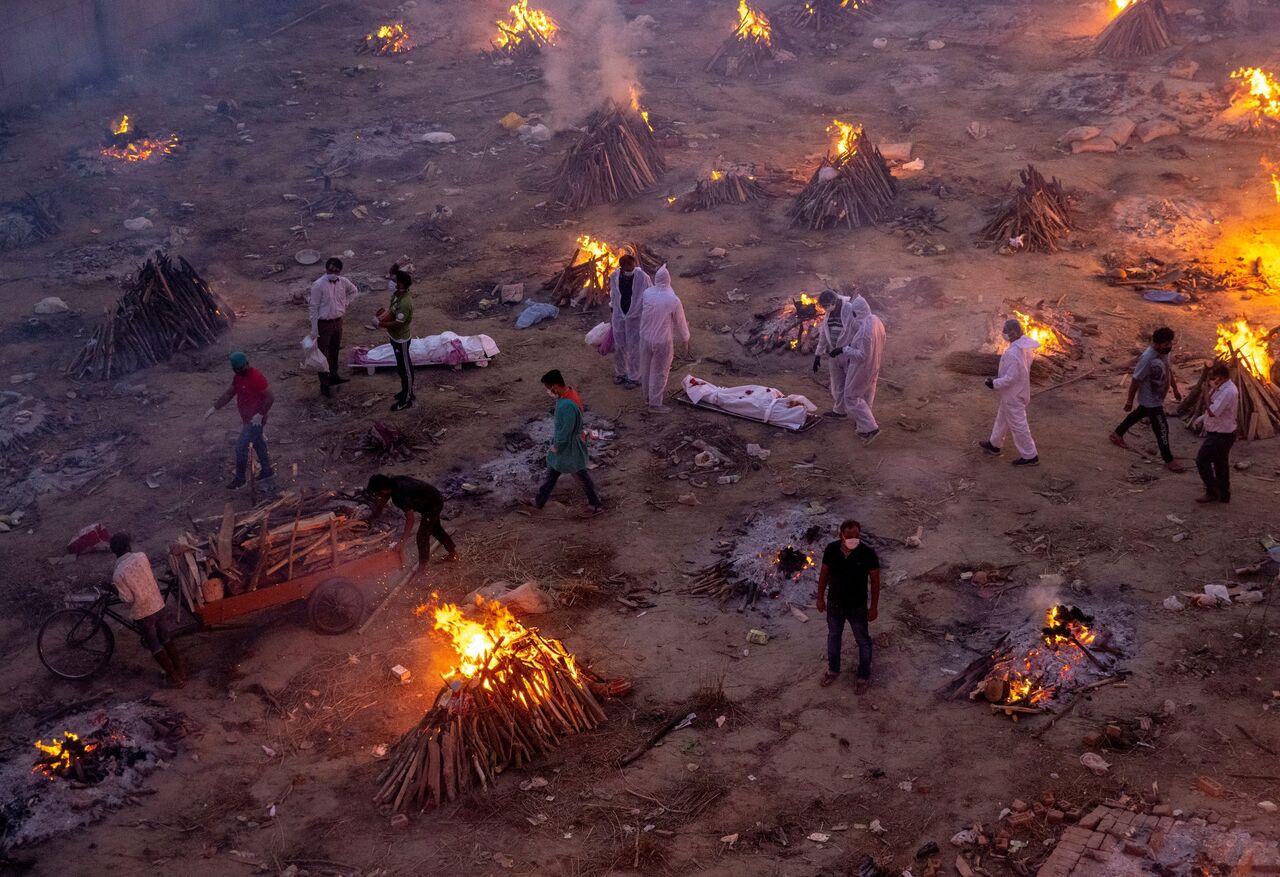Undercounting of Covid-19 deaths hides extent of devastation in India
Sign up now: Get insights on Asia's fast-moving developments

Officially, about 405,000 people in India have died of Covid-19 so far.
PHOTO: REUTERS
Follow topic:
BANGALORE - India is among the worst affected countries in the pandemic, but the full extent of the impact in terms of deaths is heavily concealed by narrow definitions of Covid-19 deaths, fudged data and opaque death registries.
Officially, about 406,000 people in India have died of Covid-19 so far. But field journalists, epidemiologists and surveyors estimate that the real number is probably far higher.
Part of the problem is whether the deaths are being accurately recorded.
Official guidelines say that when a person who tested positive for Covid-19 dies, the disease should be listed as the cause of death. When a person with symptoms of Covid-19 dies - regardless of whether he had tested negative or not been tested - his death should be classified as a suspected or probable Covid-19 death.
However, many states do not follow these guidelines and record as Covid-19 deaths only those people who had tested positive for the disease and died of related causes.
Last week, India's Supreme Court again directed the authorities to ensure that any death that occurred within three months of the person testing positive for Covid-19 be classified as a Covid-19 death.
One way which experts the world over track the true impact of the pandemic is to measure excess mortality.
The World Health Organisation defines excess mortality as the difference in the total number of deaths in a crisis and that expected under normal conditions. This number captures both the deaths caused directly by Covid-19 and others resulting from indirect impact such as a weak healthcare system.
The WHO has reported that while Covid-19 deaths worldwide last year was 1.8 million, the real death toll could be over 3 million. It added that "significant data gaps exist" in the African, Eastern Mediterranean, South-East Asian, and Western Pacific regions, where only 16 of 106 member states had enough data to calculate true excess mortality.
In India too, death registration data can be unreliable and hard to find.
Its countrywide Civil Registration System (CRS) tracks births and deaths, and is implemented by state governments. Different states officially register deaths with varied levels of thoroughness. For example, Tamil Nadu and Karnataka register all deaths, but Bihar registers only 52 per cent of them.
Its countrywide Civil Registration System (CRS) tracks births and deaths, and is implemented by state governments. Different states officially register deaths with varied levels of thoroughness. For example, Tamil Nadu and Karnataka register all deaths, but Bihar registers only 52 per cent of them.
Usually, states in India release an annual report of births and deaths more than a year later - so the 2019 data would be out in December 2020. The national CRS report that collates state data is also delayed by at least 1½ years.
Some states like Maharashtra, Kerala and Tamil Nadu have revised their death data, attributing gaps to "technical difficulties" rather than intentional fudging. After dead bodies washed up on the banks of the Ganges River, Bihar added nearly 4,000 deaths in a single day on June 9.
In late June, Kerala became the only state to release monthly CRS data, which showed it had 14,350 more all-cause deaths during Jan -May 2021 compared to the average in the same period from 2015 to 2019.
As other states withhold data on excess deaths, journalists and researchers have been leaning on unnamed government sources to access it. What they've found has confirmed suspicions about vast under-counting of Covid-19 deaths.
Indian news website Scroll.in found that Madhya Pradesh saw nearly three times more deaths in April and May compared with the same period in previous years. The excess deaths between January and May were 42 times the reported Covid-19 death count.
Andhra Pradesh in May recorded nearly five times the usual number of deaths for the month. The excess deaths between January and May were 34 times the official Covid-19 death toll.
The Hindu, one of India's largest English newspapers, analysed CRS data in Tamil Nadu to estimate that Covid-19 deaths were undercounted by about 4½ times in April and May. In Rajasthan, the excess deaths were five times the official tally.
The Newsminute found that excess deaths in Karnataka between January and June were five times the official death count.
"It is possible that not all the deaths were directly caused by Covid-19. But it is still concerning because this kind of spike in deaths does not happen during normal times," said economic historian Chinmay Tumbe, author of Age Of Pandemics. He observed that the increases in 2020 and 2021 were similar to that seen in 1918 during the influenza epidemic in India.
The Indian government has denied undercounting and defended the country's "robust system for registration and reporting of deaths".
Last month, the Ministry of Health described as "unsound" an article in The Economist which said that the country's excess deaths may be five to seven times the official number of fatalities.
Mr Tumbe said: "During the pandemic, we can't have business as usual and wait for annual reports. Instead, state governments should release live data monthly or weekly, like what the United States and United Kingdom are doing."
This is not just for transparency but also to accurately allocate oxygen, vaccines and medical resources to the most affected regions, and "prevent more people from dying", he added.

